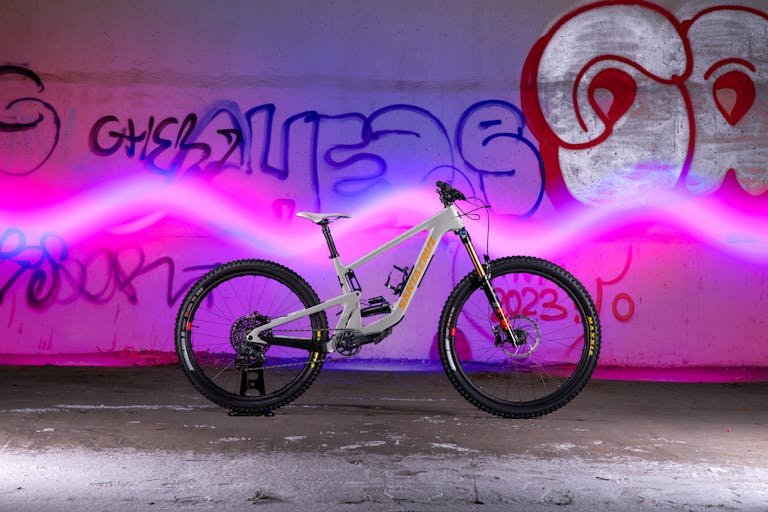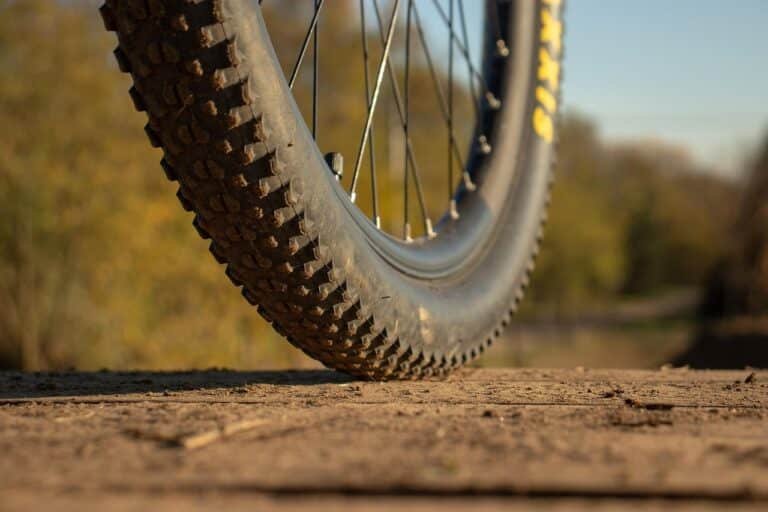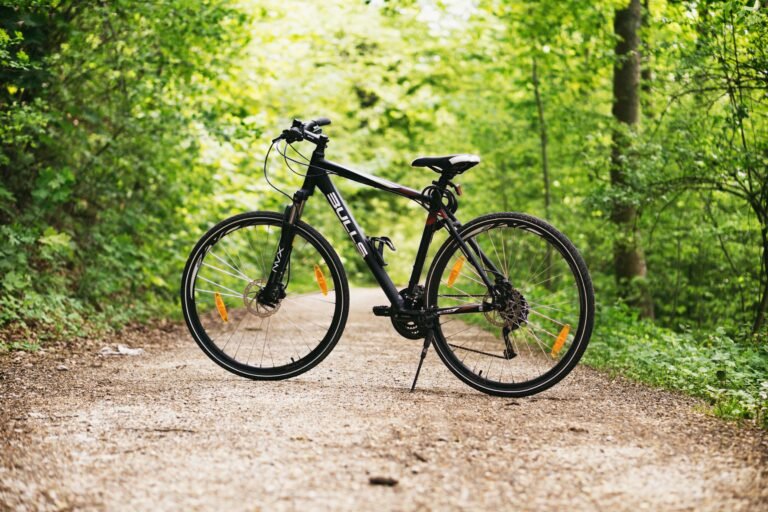Single Track vs Double Track: Understanding Trail Types (2024)
Discover the key differences of Single Track vs Double Track mountain bike trails. In this article we’ll discuss which trail type suits your riding style and get expert tips for navigating both terrains in our comprehensive 2024 guide. The difference between single track and double track is like the difference between a hiking path and a dirt road.
Whether you’re new to mountain biking or looking to expand your riding horizons, understanding these fundamental trail types will transform your riding experience. Let’s dive into the world of track types and find your perfect riding path!
What Makes Single Track Trails the Heart of Mountain Biking?
Let me tell you about my love affair with single track trails – they’ve been teaching me lessons (sometimes the hard way!) for over fifteen years now. When I first started riding these narrow trails, I made every mistake in the book. But that’s what makes them so memorable, right?
First things first: Single track trails are typically only 18-24 inches wide – about the width of your bike’s handlebars. I learned this measurement the hard way after clipping trees more times than I care to admit! These trails are basically nature’s obstacle course, weaving through the landscape like a ribbon of pure adventure.
The technical features you’ll encounter vary wildly, which is what makes these trails so addictive. You’ve got your rock gardens (my personal nemesis for the first few years), root sections that’ll rattle your teeth if you hit them wrong, and those sweet bermed corners that make you feel like a superhero when you nail them.

Let’s talk about the skills you need, because this is where I see most new riders struggle. Your basic single track toolkit should include:
Precise weight distribution
Brake control mastery (feathering, not death-gripping!)
Line selection skills (look ahead, not directly in front of your wheel)
Balance at varying speeds
Speaking of speed, here’s something that might surprise you – most riders average between 5-15 mph on a technical single track. But trust me, when you’re threading the needle between trees with just inches to spare, it feels plenty fast! I’ve learned that smooth is fast, and fast is smooth. It took me years to really understand what that meant.
Want to know where to find the best single track? The Whole Enchilada in Moab always makes it to the top of the list – it’s 27 miles of everything from high-alpine to desert riding. Closer to sea level, Lake Tahoe, California/Nevada has some surprisingly technical trails that’ll keep you honest. Who knew the West could be so extreme?
One thing I always remember: respect the trail. I’ve seen too many perfectly good sections get ruined by skidding and poor technique. Remember, we’re all keepers of these trails, whether we’re just passing through or riding them every weekend.
The real magic of single track isn’t just in the riding – it’s in the progression. There’s nothing quite like returning to a trail that used to scare you and floating through it like it’s second nature. That’s what keeps me coming back, year after year, seeking out new challenges and refining my skills.
Single Track vs Double Track: Understanding Trail Types (2024)
Ever since I started mountain biking, the difference between single track and double track trails has fascinated me. Understanding these distinctions can totally change your riding experience!
What Exactly is Single Track?
Single track trails are nature’s perfect ribbon of adventure, typically measuring just 18-24 inches wide – barely wider than your handlebars! I learned this measurement the hard way after countless tree kisses (if you know, you know). These trails are what most of us think of when we dream about “real” mountain biking.
The Magic of Natural Terrain
The beauty of single track lies in how it follows the land’s natural contours. Unlike double track, which often cuts straight up hillsides, single track dances with the landscape, creating an amazing flow that just feels right.
Technical Features That’ll Test Your Skills
Let’s talk about the challenges you’ll face – and boy, are there many! From root gardens that’ll rattle your teeth to rock drops that’ll test your nerve, single track throws everything at you.
The Flow Factor: Speed and Rhythm
On single track, you’re typically cruising between 5-15 mph, though it feels faster because everything’s so close! It’s all about finding your rhythm. Double track, on the other hand, often lets you open it up more, sometimes hitting 20+ mph on straightaways.
Prime Destinations Worth Your Time
Want to experience world-class single track? Here are my top picks. Start a wish list.
The Whole Enchilada (Moab, Utah)
Bellingham, Washington (Unemployment Line)
Tahoe Rim Trail (Cali/Nevada)

Double Track: The Bigger Brother
Now, double track trails are a different beast entirely – typically 48-50 inches wide or more. They’re often old logging roads or fire breaks, and while they might not have the same technical challenges as single track, they serve their purpose. They’re great for beginners learning the ropes or for those days when you just want to cruise.
Making Your Choice
Here’s what I’ve learned after countless miles on both: single track is where you go to challenge yourself and find that perfect flow state. Double track is your friend when you’re starting out or want to ride side-by-side with a buddy. I remember taking my son out for his first mountain bike ride – we started on double track.
The best advice I can give is to start with whatever makes you comfortable. There’s no shame in sticking to double track while you build confidence. The trails aren’t going anywhere. Just remember to respect both types of trails – they each have their place in the mountain biking world.
Double Track Trails: A Gateway to Adventure
You know, after all my years of riding, I’ve come to really appreciate Single Track vs Double Track and Understanding Trail Types. Let me share what I’ve learned about these often-overlooked gems that have become such an important part of my riding experience.
Understanding Double Track Dimensions
These trails are significantly wider than single track, typically ranging from 48 to 96 inches across.
The Historical Connection
Here’s something fascinating I learned. Most double track trails weren’t originally created for recreation at all! They’re usually repurposed logging roads or fire access routes. This explains their typically straight, purposeful layout. It’s like riding through a piece of history!
Terrain and Trail Characteristics
Sharing the Trail
Accessibility: The Great Equalizer
One thing I absolutely love about double track is how it opens up the sport to more people. The wider trail meant everyone could find their comfort zone and ride at their own pace. It’s truly amazing how these trails can accommodate different skill levels simultaneously.
I’ve developed this habit of calling out “On your left!” way earlier than seems necessary – better safe than sorry when sharing the trail!
Perfect Scenarios for Double Track
Through years of riding and teaching others, I’ve found double track trails are absolutely perfect for:
Beginning mountain bikers learning basic skills
Group rides where conversation is part of the experience
Winter riding when conditions might be sketchy on narrower trails
Training rides where you want to maintain a consistent pace
Photography stops (that extra width means you’re not blocking the trail)
The best thing about double track? It’s incredibly forgiving.
Double track trails make excellent bad-weather options. These wider trails often drain better and can handle more traffic without getting damaged.
Whether you’re just starting out or you’re an experienced rider looking for a change of pace, don’t overlook these versatile pathways. They might not have the same technical challenge as single track, but they’ve got their own special charm. Plus, they’re often the best places to practice specific skills before taking them to more challenging terrain.

Comparing Trail Characteristics: Single Track vs Double Track
Let me break down the key differences that’ll help you understand what to expect on your rides.
The Width Factor
Here’s something fascinating I’ve learned. Trail width changes everything about how you ride. Single track trails typically measure 18-24 inches wide – just enough for your handlebars – while double track trails range from 48-96 inches.
Technical Challenge Levels
Let’s talk about difficulty. I’ve found that single track generally demands more technical skill. You’re dealing with:
Tighter turns requiring better bike handling
More frequent obstacles
Less room for error
Quick decision-making requirements
Double track tends to be more forgiving.
Speed and Flow Dynamics
Here’s something interesting about speed – it’s not just about how fast you can go, but how fast you should go. On double track, you might hit higher speeds (sometimes 20+ mph on straightaways), but single track often feels faster even at lower speeds (typically 5-15 mph) because everything’s whizzing by so close to you.
Traffic Management
Managing traffic is totally different on each type of trail. On double track, passing is usually straightforward – there’s room to maneuver. But single track? That’s where it gets interesting. I’ve developed this whole system of calling out early and finding natural pull-off spots.
Here’s my quick guide for passing:
Double track: Signal your intention and pass when clear
Single track: Call out early, wait for a wider section
Both types: Always yield to uphill riders and horses
Environmental Impact
This is something I’ve become passionate about after helping with trail maintenance. The environmental impact varies significantly between trail types:
Double track impacts:
Single track impacts:
Making Your Choice
After years of riding both, I’ve learned that neither type is “better” – they’re just different tools for different jobs. Some days I crave the technical challenge of single track, while other times I want the social aspect of riding double track with friends.
The key is understanding what each trail type offers. Remember, both trail types have their place in the mountain biking world. Understanding their characteristics helps you choose the right trail for your mood, skill level, and riding goals. And sometimes, the best rides combine both – using double track for warm-ups before diving into those sweet single track sections!
Multi-Use Trail Etiquette: Sharing Trails with Courtesy
You know what’s funny? When I first started mountain biking, I thought trail etiquette was just about not running into people. Boy, was I wrong! After years of riding shared trails, I’ve learned that good etiquette is what keeps our trail systems working smoothly for everyone.
The Art of Passing
Let me tell you about good passing protocol – Here’s what I’ve found works best:
When approaching others from behind:
Call out early (I use “Rider back!” or “On your left!”)
Slow down well before reaching them
Give plenty of space when passing
Thank people who step aside (a little courtesy goes a long way!)
I remember one embarrassing moment when I waited too long to announce myself and startled a hiker – definitely not my proudest trail moment! Now I always err on the side of early communication.

Understanding Right-of-Way
Here’s the golden rule I live by on trails:
Yield to horses (ALWAYS)
Bikers yield to hikers
Downhill yields to uphill
Everyone yields to trail maintenance crews
This hierarchy isn’t just random – it’s based on stopping and starting difficulty. Trust me, it’s way easier for us bikers to get going again than someone walking uphill with a heavy pack!
Communication is Key
Clear communication makes everyone’s trail experience better. I’ve developed these habits over the years:
Use a bell on blind corners
Call out number of riders in your group (“2 more behind!”)
Make your intentions clear (“Passing on your left!”)
Thank others who yield
Managing Your Speed
Speed management is crucial on multi-use trails. Here’s what I’ve learned:
Slow down around blind corners
Reduce speed in high-traffic areas
Match speed to trail conditions
Be ready to stop quickly
One time, I came around a corner too hot and found a family with small children – talk about a wake-up call! Now I always ride like there might be someone around the next turn.

Best Practices for Trail Sharing
After countless hours on shared trails, these practices have become second nature:
Stay on designated trails
Don’t ride muddy trails
Pack out what you pack in
Keep noise levels reasonable
Remove earbuds, or use the pass-through feature – awareness is safety!
Safety First

Safety considerations are non-negotiable. Here’s my checklist:
- Maintain control at all times
- Anticipate others around blind corners
- Use appropriate protective gear
- Carry basic first aid supplies
- You never know when someone might need assistance!
The Unwritten Rules
There are some things you just learn over time. For instance:
Don’t block the trail while taking breaks
Step off to the downhill side (less erosion)
When in groups, don’t hog the whole trail
These little courtesies make a huge difference in everyone’s trail experience. I remember how a simple “thank you” from a hiker made my day after I yielded the trail – it’s those small interactions that build good will between different trail users.

Weather and Conditions
Trail etiquette changes with conditions:
- Be extra cautious in wet weather
- Give more space when passing on slick trails
- Consider alternative routes during peak times
- Be visible in low light conditions

Remember, we’re all ambassadors for our sport. Every positive interaction with other trail users helps secure our access to these amazing resources. Whether you’re a weekend warrior or daily rider, good trail etiquette keeps everyone safe and happy.
The best part is once you get these habits down, they become totally natural. Now I can’t imagine riding any other way. After all, the trails belong to all of us – we’re just sharing them for the day!
Wrapping Up
Whether you choose the narrow, technical challenge of single track or the accessible versatility of double track, each trail type offers its own unique mountain biking experience. Understanding these differences helps you make better riding choices and improves your overall trail experience. Remember, there’s no “better” option – it’s about finding the right track for your riding goals and skill level. Ready to explore? Start with our recommended trails for each type and discover your preferred riding style!
Engage, Endure and Enjoy!
Find More Resources on Bicycles
- Smart Bike Trainers: 2024 Best Picks with Features and Benefits
- Mountain Biking for Beginners: Essential Guide to Hit the Trails in 2024
- 3 Best Mountain Bikes of 2024: Complete Buyer’s Guide & Reviews
- How Do You Adjust Bike Brakes? A Step-by-Step Guide for 2024
- Essential Mountain Bike Gear: A Complete Guide for 2024







